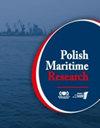Computer-Aided System for Layout of Fire Hydrants on Boards Designed Vessel Using the Particle Swarm Optimization Algorithm
IF 2
3区 工程技术
Q2 ENGINEERING, MARINE
引用次数: 0
Abstract
Abstract The functional layout of fire safety equipment in technical spaces of ships is a time-consuming process. When designing a ship fire protection system, the designer must manually position each system component in such a way as to meet the requirements of regulations arising from the technical specification, various legal regulations of maritime conventions and classification societies of the vessel to be designed. Layout of fire hydrants assisted by a computer that is based on pre-defined criteria and various constraints could significantly support the designer in working easier and faster. This paper presents a prototype computer-aided design system that enables optimal placement of fire hydrants using the metaheuristic Particle Swarm Optimization (PSO) algorithm. This algorithm was used in Rhinoceros 3D software with its Grasshopper plugin for visualizing the arrangement of fire safety equipment. Various solution arrangements compared with the fire hydrant placement in real ships are illustrated by a case study. Demonstrating how design work can be facilitated and what potential benefits can be achieved are presented as well.利用粒子群优化算法设计船板上消防栓布局的计算机辅助系统
摘要 船舶技术空间消防安全设备的功能布局是一个耗时的过程。在设计船舶消防系统时,设计人员必须手动定位每个系统组件,以满足所设计船舶的技术规范、海事公约和船级社的各种法律规定的要求。根据预先确定的标准和各种约束条件,通过计算机辅助进行消火栓布局,可以大大提高设计人员的工作效率。本文介绍了一种计算机辅助设计系统原型,该系统利用元启发式粒子群优化(PSO)算法实现了消火栓的最佳布置。该算法被用于 Rhinoceros 3D 软件及其 Grasshopper 插件,以实现消防安全设备布置的可视化。通过一个案例研究,说明了与实际船舶中消火栓布置相比较的各种解决方案安排。此外,还展示了如何促进设计工作以及可实现的潜在效益。
本文章由计算机程序翻译,如有差异,请以英文原文为准。
求助全文
约1分钟内获得全文
求助全文
来源期刊

Polish Maritime Research
工程技术-工程:海洋
CiteScore
3.70
自引率
45.00%
发文量
20
审稿时长
>12 weeks
期刊介绍:
The scope of the journal covers selected issues related to all phases of product lifecycle and corresponding technologies for offshore floating and fixed structures and their components.
All researchers are invited to submit their original papers for peer review and publications related to methods of the design; production and manufacturing; maintenance and operational processes of such technical items as:
all types of vessels and their equipment,
fixed and floating offshore units and their components,
autonomous underwater vehicle (AUV) and remotely operated vehicle (ROV).
We welcome submissions from these fields in the following technical topics:
ship hydrodynamics: buoyancy and stability; ship resistance and propulsion, etc.,
structural integrity of ship and offshore unit structures: materials; welding; fatigue and fracture, etc.,
marine equipment: ship and offshore unit power plants: overboarding equipment; etc.
 求助内容:
求助内容: 应助结果提醒方式:
应助结果提醒方式:


